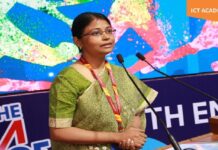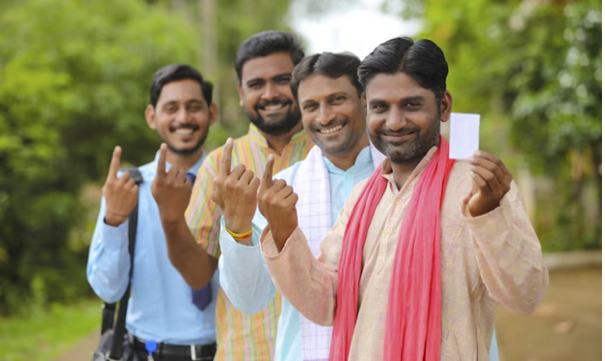16 March 2024- Chief Election Commissioner Rajiv Kumar addressed the media on the General Election at Vigyan Bhawan. 2024 general elections are to be held in 7 phases from April 19, with results on June 4.
In India, the General Election is like the biggest festival where everyone gets to join in. It’s a special time when people of India from all over the world come together to choose their leaders. You see, India is a really big country, and it’s the biggest democracy in the world! During the General Election, there’s so much excitement in the air.
Everywhere you look, there are colorful flags, banners, and posters of different political parties. People talk about who they want to vote for and why. It’s a celebration of everyone’s right to have a say in how the country is run.
Search in Electoral Roll: https://electoralsearch.eci.gov.in/
Source: The Hindu
Assembly elections for Andhra Pradesh, Sikkim, Arunachal Pradesh, and Odisha will also be simultaneously held along with the Lok Sabha Election 2024.
Source: Wikipedia
Contemporary politics and previous elections
India is known for its multi-party system, which includes the BJP (Bhartiya Janta Party) and the INC (Indian National Congress). Currently, the Bhartiya Janta Party, with its alliance called NDA (National Democratic Alliance), has governed the country with Narendra Modi since 2014. The tenure of the 17th Lok Sabha will end on 16 June 2024.
Electoral system
According to the Indian Constitution (Article 83), the general election is required to be held once every five years. In 2024, the total number of seats increased from 543 to 544.
Who can vote? People 18 years of age and older can vote in their respective constituency with valid voter identification cards issued by the Election Commission of India. For the 2024 election, 968 million people are eligible to vote, an increase of about 150 million people from the 2019 election.
Check out for current seat structure in Lok sabha: https://en.wikipedia.org/wiki/Lok_Sabha
Find out voter timeline:
| ∼49.7 Cr.- Male Voters | ∼47.1 Cr.- Female Voters | ∼1.8 Cr. First-time voters (18-19 years of age) |
| ∼88.4 Lakh PwD Voters | ∼19.1 Lakhs- Service Electors | ∼82 Lakh- 85+ age voters |
| ∼48000 transgender voters | ∼19.74 Cr. – Young voters (20-29 years of age) | ∼2.18 Lakhs Centenarians |
























































